Verification of tracks made of Peter
I made eight tracks of Tropical Storm Peter,
before it was
assessed as
a tropical cyclone, from seven model cycles. In one instance, I made two tracks from one model cycle, and those tracks didn't overlap in time. Hereafter, those two tracks will be considered as one. I made one more track after cyclogenesis.
Additionally, within 504 hours of cyclogenesis, there were two instances,
when I missed cyclogenesis entirely.
As of this analysis, best track positions are available September 13, 12Z
thru September 29, 18Z, and as such, position comparisons are possible only
for this timespan.
Since I give only SSHS categories in my tracks, I don't
calculate intensity errors in units of speed, but in categories. For
this purpose, I define tropical or subtropical storms as "Category 0", tropical
or subtropical depressions as "Category -1" and non-existence of a tropical or subtropical cyclone as
"Category -2".
In the seven tracks (made before operationally recognized
cyclogenesis),
original formation times ranged between September 9, 18Z and September
19, 00Z. Average was September 15, 02Z and median was September 16, 12Z.
In the nine cases (7 tracks, before the tracks and data agreed,
that tropical storm would remain the peak intensity, and 2 complete
misses), peak intensity ranged between Category -2 and Category 1.
Average was Category -0.56 and median was Category -1.
In the eight tracks (made before operationally recognized degeneration), final dissipation times ranged between September 14, 12Z
and September 28, 12Z. Average was September 20, 23Z and median was September 20, 12Z.
At the lead time of 1 day (24 hours), there were 0 hits, 0 false detections and 0 misses. 1 available position comparison produces an average error of 31 nautical miles.
At the lead time of 2 days (48 hours), there were 1 hit, 2 false detections and 0 misses. 4 available position comparisons produce an average error of 111 nautical miles.
At the lead time of 3 days (72 hours), there were 2 hits, 3 false detections and 0 misses. 5 available position comparisons produce an average error of 417 nautical miles.
At the lead time of 4 days (96 hours), there were 1 hit, 1 false detection and 2 misses. 3 available position comparisons produce an average error of 282 nautical miles.
At the lead time of 5 days (120 hours), there were 0 hits, 0 false detections and 4 misses. No available position comparisons.
At the lead time of 6 days (144 hours), there were 0 hits, 1 false detection and 4 misses. No available position comparisons.
At the lead time of 7 days (168 hours), there were 0 hits, 1 false detections and 2 misses. No available position comparisons.
At the lead time of 8 days (192 hours), there were 0 hits, 1 false detection and 1 miss. 1 available position comparison produces an average error of 858 nautical miles.
At the lead time of 9 days (216 hours), there were 0 hits, 0 false detections and 1 miss. No available position comparisons.
At the lead time of 10 days (240 hours), there were 0 hits, 0 false detections and 1 miss. No available position comparisons.
At the lead time of 11 days (264 hours), there were 0 hits, 0 false detections and 1 miss. No available position comparisons.
At the lead time of 12 days (288 hours), there were 0 hits, 0 false detections and 1 miss. No available position comparisons.
At the lead time of 13 days (312 hours), there were 0 hits, 0 false detections and 1 miss. No available position comparisons.
At the lead time of 14 days (336 hours), there were 0 hits, 0 false detections and 1 miss. No available position comparisons.
At the lead time of 15 days (360 hours), there were 0 hits, 0 false detections and 1 miss. No available position comparisons.
At the lead time of 16 days (384 hours), there were 0 hits, 0 false detections and 1 miss. No available position comparisons.
At the lead time of 17 days (408 hours), there were 0 hits, 0 false detections and 1 miss. No available position comparisons.
At the lead time of 18 days (432 hours), there were 0 hits, 0 false detections and 1 miss. 1 available position comparison produces an average error of 187 nautical miles.
At the lead time of 19 days (456 hours), there were 0 hits, 2 false detections and 1 miss. 1 available position comparison produces an average error of 121 nautical miles.
At the lead time of 20 days (480 hours), there were 0 hits, 2 false detections and 2 misses. 1 available position comparison produces an average error of 418 nautical miles.
At the lead time of 21 days (504 hours), there were 0 hits, 2 false detections and 1 miss. 1 available position comparison produces an average error of 764 nautical miles.
Circle coloration scheme
Here are the tracks once again.
August 21, 18Z:
September 6, 06Z (part 1):
September 6, 06Z (part 2):
September 10, 12Z:
September 14, 06Z:
September 15, 06Z:
September 16, 06Z:
September 17, 00Z:
September 22, 06Z:
The complete misses were from the following model cycles:
August 30, 18Z
September 2, 06Z
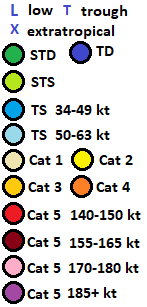
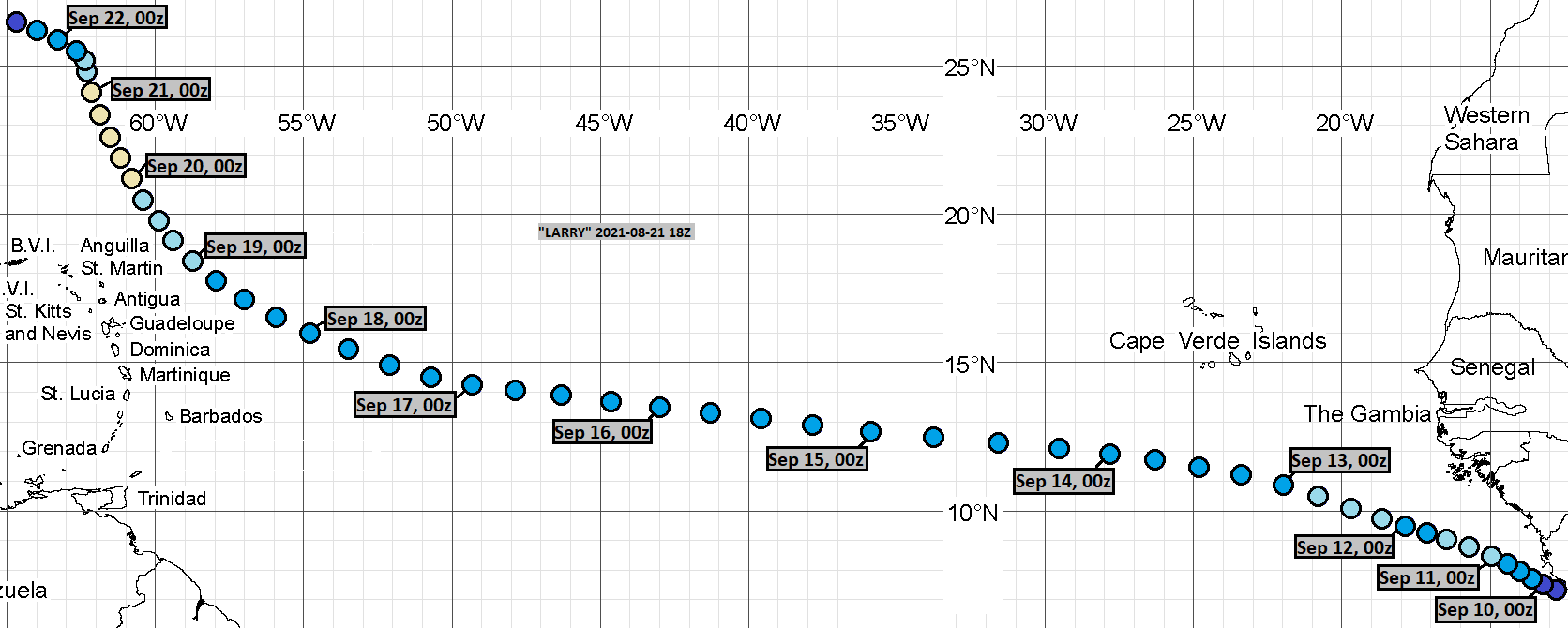
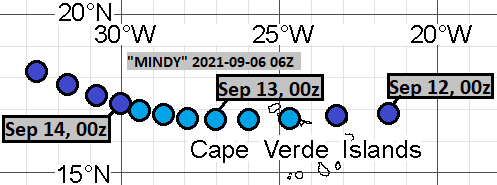


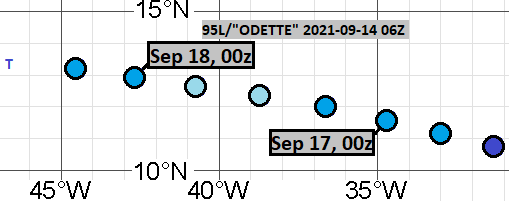
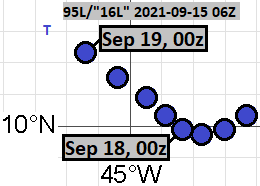
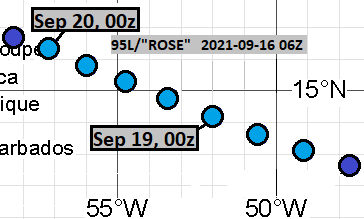
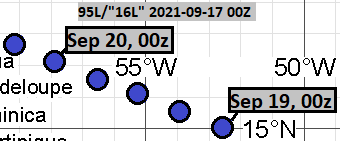
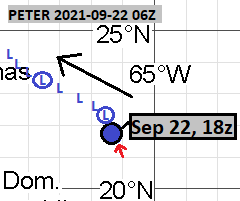
Comments
Post a Comment